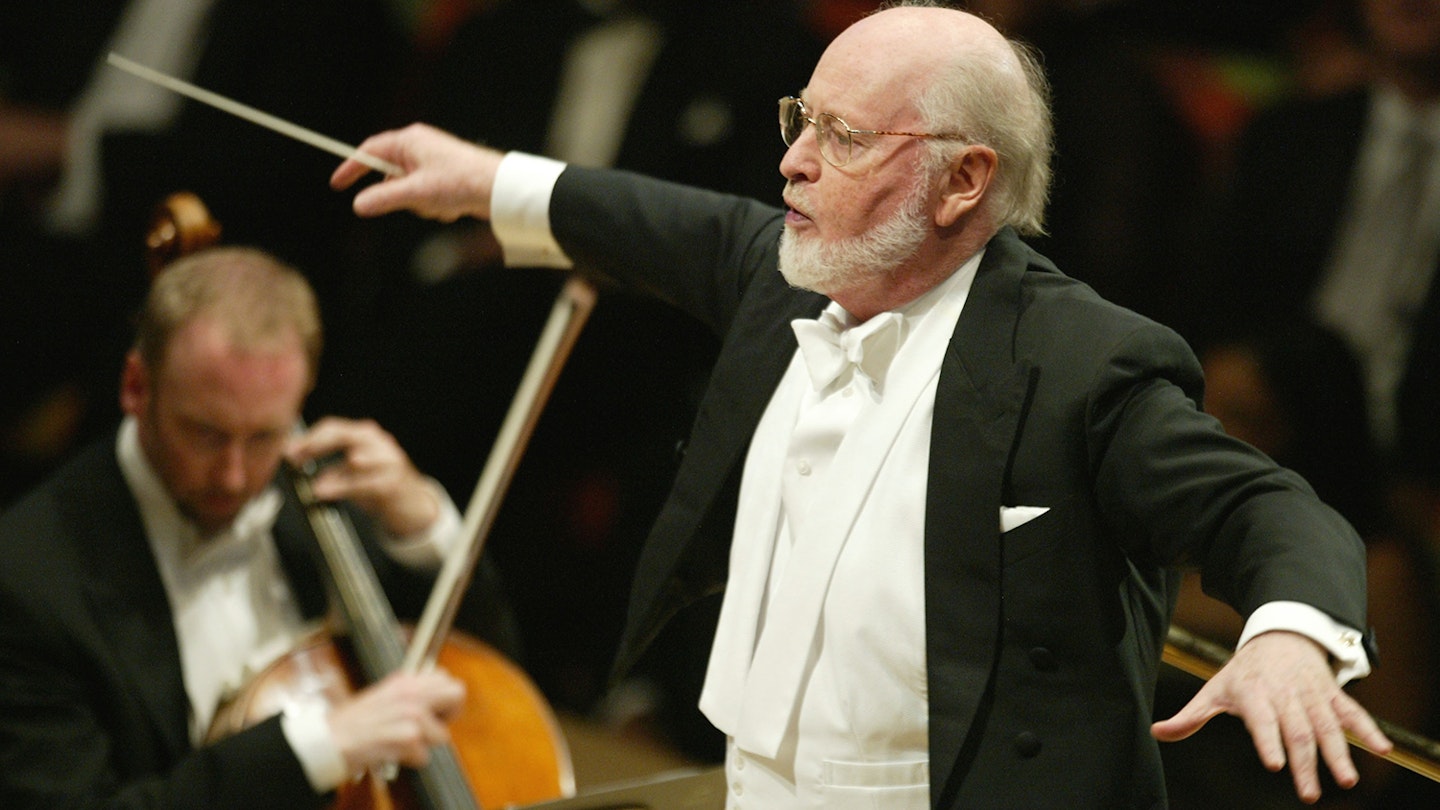The legendary composer breaks down his approach to scoring every Indiana Jones film – introducing the character in Raiders Of The Lost Ark, scoring a darker adventure in Temple Of Doom, illustrating the relationship between Indy and his dad in The Last Crusade, and returning to the character for Kingdom Of The Crystal Skull.
Originally published in issue 227 of Empire magazine.

My first task on Raiders Of The Lost Ark was to create a recognizable theme for the Indiana Jones character. Every time Harrison jumps on the horse or does something heroic, I wanted to pay reference to this theme. I remember playing Steven a couple of options on the piano. He loved them and simply said, "Why don't you use both?" So those two tunes became the main theme and bridge of what we know call 'The Raiders March'. The interesting thing about 'The Raiders March' is that it is a very simple little tune, but I spend more time on those bits of musical grammar than anything else. The sequence of notes has to sound just right so it seems inevitable, like it has always been with us. It was something that I chiseled away at for a few weeks, changing a note here and there, to find the correct musical shape. Those little simplicities are often the hardest things to capture.
I used to love the romantic themes in those old Warner Bros. love stories like Now, Voyager, the kind of melodic sweep we would occasionally get from composers like Max Steiner. In Raiders Of The Lost Ark, for the love story between Indiana Jones and Marion Ravenwood, I thought an emotionally larger-than-life theme would contrast well with the humour and lightness in the way Harrison Ford and Karen Allen played their scenes together. Even if we didn't have the obvious, traditional love scenes, I felt it was permissible to inject that musical emotion into their relationship. What I loved – and still love – about the Indiana Jones movies is that they do present a wide range of musical challenges. We go to great lengths to frighten the audience and sometimes use advanced orchestral techniques, atonal music that would be more akin to contemporary concert music. If people hear the music without seeing the images, they might be shocked by it, but for me, those things are terrific fun to do.
The music has to lure us in so it seems like it is going to be a beautiful experience and then turn itself around into something much more terrifying.
I also remember doing pastiches of dark orchestral stabs that would represent the evil Nazis when they got into their tanks, drive their cars, issued their orders. The orchestra hits these 1940s dramatic chords, the seventh degree on the scale of the bottom, which is like an old signal of militaristic evil. We just did it for the camp fun of it, and it seems that's admissible in the style of a film like Raiders.
For the opening of the Ark, I wanted to try to evoke a biblical atmosphere, turning pages backwards to early antiquity. The role of the orchestra and chorus is a complicated one in pieces like this. The music has to lure us in so it seems like it is going to be a beautiful experience and then turn itself around into something much more terrifying. That kind of sonic transformation often occurs in opera and is one of the techniques a composer has at his disposal.
Temple Of Doom had a darker coloration but always with a sense of tongue-in-cheek. One of my fondest memories of all the movies is Kate Capshaw singing 'Anything Goes' in Mandarin Chinese. I love Cole Porter and I got the biggest kick out of doing that pastiche, with a female chorus and antique sax. It was a great send-up of early 1930s Hollywood musicals.

The relationship between Indiana Jones and his father added a quite a different emotional texture to Last Crusade, but there was still plenty of space for traditional action-adventure music. The opening scene of young Indiana Jones, dressed as a boy scout, finding the Cross Of Coronado and evading the bandits on a circus train is beautifully shot and constructed by Steven. In that four-or-five-minute sequence there are 50 or more musical sync points in very short space of time. It is done like a comedic circus ballet, a sweep of trumpets when he falls off a horse and a clash of cymbals when he falls into the snake box. It is very tight, very quick, a wedding of action cuts and music. I've really enjoyed performing it concert over the years.
Returning to Indiana Jones for Crystal Skull has been wonderful. It was like riding a bicycle. I didn't have to learn how to re-do it. I began work and within an hour or two I was back into the rhythm and spirit of the piece. It's also been a great opportunity to take another romp through the imaginations of George and Steven. Working with these two gentlemen is always a joyous experience. We get along as people so well, we have the same sensibilities and tastes about scenes, and when we hit upon something that works, we all seem to agree about it. That's another way of being in sync. On all four films, it has been filmmaking that is more play than work.
